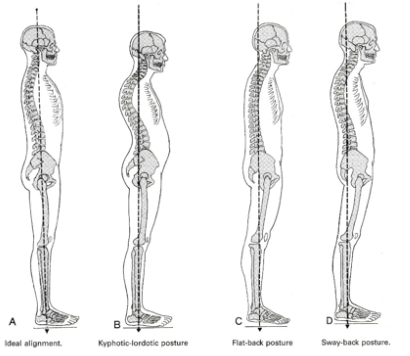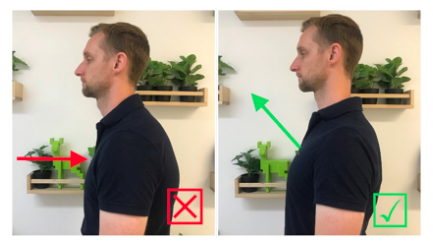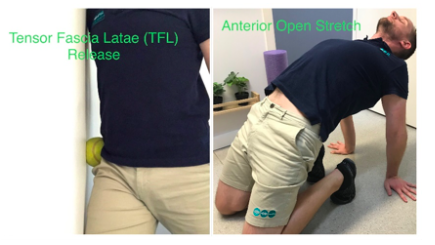|
Article by Shane Assmusen, - One of our highly experienced remedial massage therapists. Posture, as defined by Oxford Dictionary is ‘The Position in which someone holds their body when standing or sitting’ When it comes to the position of the body, there is an ‘ideal’ position. This position (or alignment) allows for a stacking of the skeletal structures, in a way that combats the forces of gravity and distributes the load evenly across your spine. As a massage therapist and trainer, this is key. To have a posture that resembles “ideal” alignment, allowing for greater performance, and decreased risk of injury. Below is a picture giving an idea of different postures from side view; Picture taken from ‘Muscles Testing and Function with Posture and Pain’ These postures can also be seen from a seated (desk bound) position. If you observe the different postures, you’ll notice that the 3 pictures to the right all have their heads, and hips forward with either, excessively curved or excessively straight spines. When this happens, our muscles need to actively assist in holding the body upright. It also changes the distribution of load on your spine, potentially leading to injury. These positions on their own are not bad, unless you find yourself stuck, unable to move out of them. Spending excessive time in any position usually makes the body tighten to the position as a means of compensation. This can caused by, work postures and habits, sedentary lifestyles, and even past injuries The goal is to make your body mobile enough to move in and out of any position, while having enough stability and endurance to hold any position (mainly an ideal posture). Here are 5 things you can do to help improve your posture; 1.Lift your Sternum: A lot of people are told to pull their shoulders back and down, and although this is great from an exercise perspective, it is not a position that can be held long. Muscles that are not meant to be on all the time, fatigue, and as such you’ll quickly find yourself at your desk, slouching again. So, simply lift your sternum. This straightens the thoracic spine, allowing the head, neck, and shoulders to sit in a more natural position. 2.Stretch and Release, mainly through your front: As seen in the diagram at the beginning of this post, the “not ideal” postures, have a hollowed chest, with the head and hips forward, and can have an excessive curve or hyperlordodic position of the lower back.
If you find that your posture resembles one like the diagrams above, we need to look at what is short and tight. When the chest is hollowed, the shoulders are pulled forward. This position allows the pectoral (Pecs) muscles to tighten. A large curve (known as hyperlordosis) in your lower back usually results in tight hip flexors. So, we are mainly looking at the anterior (front) muscles to release, as these prevent us from getting back to that ideal posture. The muscles you want to lengthen include: Pectorals (Pecs), Sternocleidomastoid (SCM), Abdominals, Psoas, Tensor Fascia Latae (TFL), Quadriceps (Quads), and Adductors (Inner Thigh). We have two stretching and triggering resources available on the website which outline ways to help lengthen these muscles. (Mobility for Upper Body and Lower Body) 3.Strengthen Your Foundation: The feet and hips are generally seen as the foundation of your body, since these are what we stand, sit, and drive our bodies with throughout the day. If your foundation is weak, then what hope does your upper body have of stabilizing itself, along with the rest of the body? Once you have stretched and released the tightness around your hips and legs, you should find yourself with better range of movement. With that in mind, you can then start working on your strength and mobility (active range of movement). Doing exercises like; squats, deadlifts, lunges, side lunges, box Jumps, running, and any other leg exercises, variations, progressions or regressions. Poor technique and doing exercises above your current fitness level will only reinforce bad posture and habits and can lead to injury. That is why it is so important to consult a trainer, coach or exercise physiologist regarding correct technique and the appropriate level of exercises that you should begin to incorporate into your sessions. For those who aren’t quite active yet! Don’t forget that just getting some exercise will be a great start. Anything you can be doing to start moving and taking those joints through range is going to help to build a stronger foundation. 4.De-Stress: Stress is a major issue when it comes to our health and wellbeing. It comes in many forms of physical and mental stress. For example, not getting enough sleep, a long day at work, being harassed in some way, doing a sporting competition, compensating while using crutches. Think about a time when you have been extremely tyred, and I’ll bet you felt slumped the entire time until you had your rest. On the other hand, a time you were extremely excited would have felt awake and upright, with no effort to hold that position. So, try finding something that helps you de-stress. Whether it’s, a form of meditation or exercise, or even a change to your work or home situations, because your mood can directly influence your posture. 5.Eat Well: Lastly, we have all heard the benefits of eating healthy, and I’d like to think that we all know the feeling of eating healthy. However, it can be hard to sift through the enormous amounts of conflicting information out there. Maintaining a healthy body weight range can have an impact on your posture as well as improve your overall health and wellbeing. So, to keep it simple, eat plenty of different vegetables, drink plenty of water, and decrease your sugar consumption. These are some of the things that most “diets” can agree on, but you don’t have to take my word for it, go see your local dietician or nutritionist if your need help. Final Thoughts: As a remedial massage therapist and trainer improving posture and general mobility is something that I focus on in treatment. It takes a combination of –
By working on the above key factors, you should, in time, find yourself more comfortable within yourself. Remember to be consistent and persistent. It will take some conscious effort. If you would like more information about this topic or know your posture could be better book in for a treatment (book a remedial massage) or feel free to contact me at [email protected]. I am happy to help where I can. Until next time. Shane. References; Muscles Testing and Function with Posture and Pain ISBN 13: 978-0-7817-4780-6 |
AuthorKat Murray, Archives
May 2024
Categories
All
|



 RSS Feed
RSS Feed